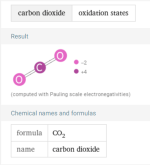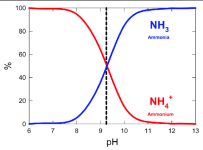- Mar 20, 2023
- 250
- Pool Size
- 30000
- Surface
- Vinyl
- Chlorine
- Salt Water Generator
- SWG Type
- CircuPool Universal40
Question based on some comments in the Swimming Reddit forum. I had said that well-maintained water shouldn't ever need to be changed. One person said that trichloramines forming was the reason the water did need to be changed periodically. That there was no other way to get rid of them. I had latched onto their original assertation that "if the water is salty tasting and it isn't a salt-water pool, that means it hasn't been changed recently" implying it wasn't maintained well. I had repeated what I read here-that chlorine will add salt and therefore the salt taste could just be a sign that the pool has been chlorinated for a long time.
So I got interested and did some googling... Found some different sites suggesting that superchlorinating, AKA shocking at roughly 10 times the amount of chloramines would get rid of chloramines. However, I found another that stated that there are three types that get formed, depending on what exactly the chlorine was reacting with: chloramines, dichloramines, and trichloramines and the shock procedure doesn't get rid of all of them-leaving trichloramines behind.
I also found some research looking at how trichloramines can cause asthma-like problems in lifeguards and professional-level swimmers (i.e. people who are in the building for a long time breathing them in. Those research papers also referred to the trichloramines as being volatile fumes-I couldn't find anything about them being in the water itself for long. Suggestion in those papers was improved and strategic ventilation.
So my question for those in the deep end:
How does one get rid of chloramines in an indoor pool in general?
Am I correct in my understanding that the trichloramines are volatile and will off-gas into the air quickly, so it is the air that needs to be changed out regularly, not the water?
Do trichloramines cause any health effects while still present in the water, prior to off-gassing?
So I got interested and did some googling... Found some different sites suggesting that superchlorinating, AKA shocking at roughly 10 times the amount of chloramines would get rid of chloramines. However, I found another that stated that there are three types that get formed, depending on what exactly the chlorine was reacting with: chloramines, dichloramines, and trichloramines and the shock procedure doesn't get rid of all of them-leaving trichloramines behind.
I also found some research looking at how trichloramines can cause asthma-like problems in lifeguards and professional-level swimmers (i.e. people who are in the building for a long time breathing them in. Those research papers also referred to the trichloramines as being volatile fumes-I couldn't find anything about them being in the water itself for long. Suggestion in those papers was improved and strategic ventilation.
So my question for those in the deep end:
How does one get rid of chloramines in an indoor pool in general?
Am I correct in my understanding that the trichloramines are volatile and will off-gas into the air quickly, so it is the air that needs to be changed out regularly, not the water?
Do trichloramines cause any health effects while still present in the water, prior to off-gassing?












